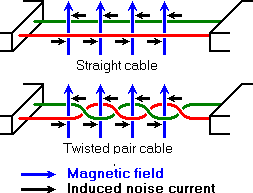Serial, RS485
Overview
RS-485 is very similar to RS-422 where it is balanced pair communications in order to archive high bit rates over long distances with minimal or no noise introduced into the data. The other improvements over RS-422 was to allow higher speeds and Multi-drop capabilities
EIA-485 only specifies electrical characteristics of the driver and the receiver. It does not specify or recommend any data protocol. EIA-485 enables the configuration of inexpensive local networks and multidrop communications links. It offers high data transmission speeds (35 Mbit/s up to 10 m and 100 kbit/s at 1200 m). Since it uses a differential balanced line over twisted pair (like EIA-422), it can span relatively large distances (up to 4000 feet or just over 1200 metres).
Pinouts
EIA-485 or commonly refered as rs485 does not specify any connector or pinout. Circuits may be terminated on screw terminals, D-subminiature connectors, or other types of connectors.
The EIA-485 differential line consists of two pins:
- A aka '−' aka TxD-/RxD- aka inverting pin
- B aka '+' aka TxD+/RxD+ aka non-inverting pin
The B line is positive (compared to A) when the line is idle (i.e., data is 1).
In addition to the A and B connections, the EIA standard also specifies a third interconnection point called C, which is the common signal reference ground.
These names are all in use on various equipment, but the actual standard released by EIA only uses the names A and B. However, despite the unambiguous standard, there is much confusion about which is which:
The EIA-485 signaling specification states that signal A is the inverting or '-' pin and signal B is the non-inverting or '+' pin.
The standard does not discuss cable shielding, but makes some recommendations on preferred methods of interconnecting the signal reference common and equipment case grounds.
Advantages & Disadvantages
Advantages of RS-422 and RS-485:
- Higher data rates up to 35Mbps
- Longer cable lengths up to 4000 Feet
- Noise rejection or total noise immunity
- Any ground loops would not affect data transmission
Disadvantages of RS-422 and RS-485:
- Only one transmitter for most applications (applies only to RS-422)
- More cabling required compared to RS-232
- Not as common compared to RS-232
